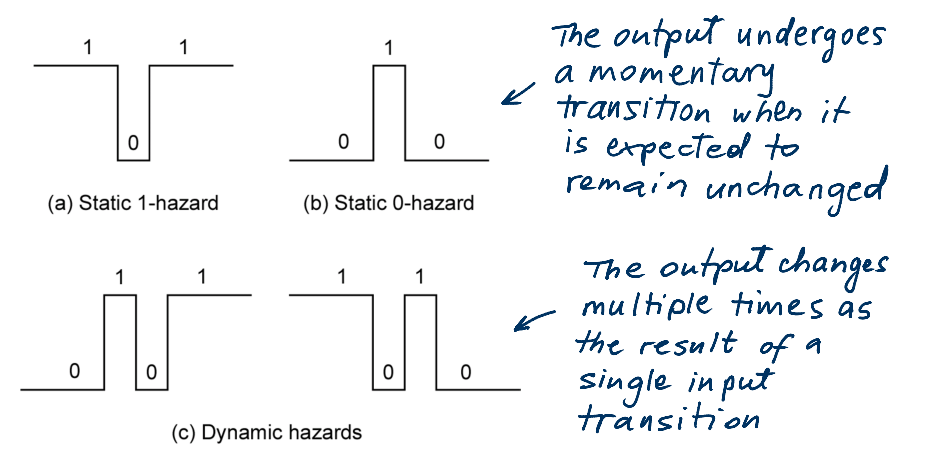Glitches and Hazards
- A glitch is an unwanted pulse at the output of a combinational logic network – a momentary change in an output that should not have changed
- A circuit with the potential for a glitch is said to have a hazard
- In other words a hazard is something intrinsic about a circuit; a circuit with hazard may or may not have a glitch depending on input patterns and the electric characteristics of the circuit.
When do circuits have hazards ?
Hazards are potential unwanted transients that occur in the output when different paths from input to output have different propagation delays
Types of Hazards (on an output)
static 1-hazard, static 0-hazard, dynamic hazard

Hazard's Concern
- Hazards do not hurt synchronous circuits
- Hazards Kill Asynchronous Circuits
- Glitches Increase Power Consumption
referece
CPE166/EEE 270 Advanced Logic Design-Digital Design: Time Behavior of Combinational Networks: https://www.csus.edu/indiv/p/pangj/166/f/sram/Handout_Hazard.pdf
John Knight, ELEC3500 Glitches and Hazards in Digital Circuits http://www.doe.carleton.ca/~shams/ELEC3500/hazards.pdf